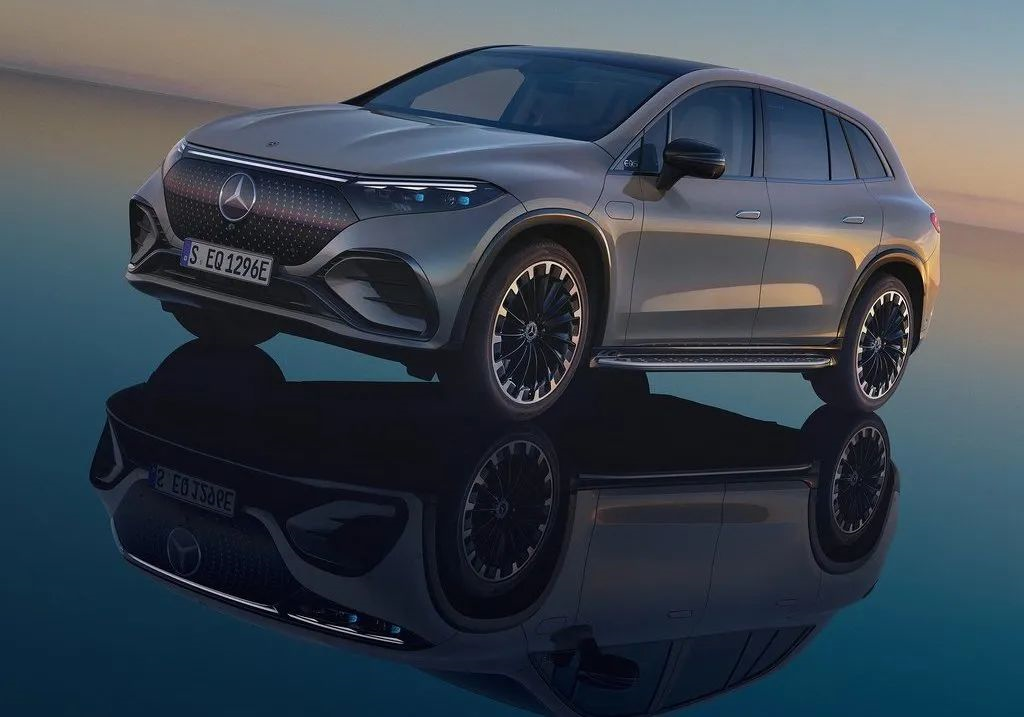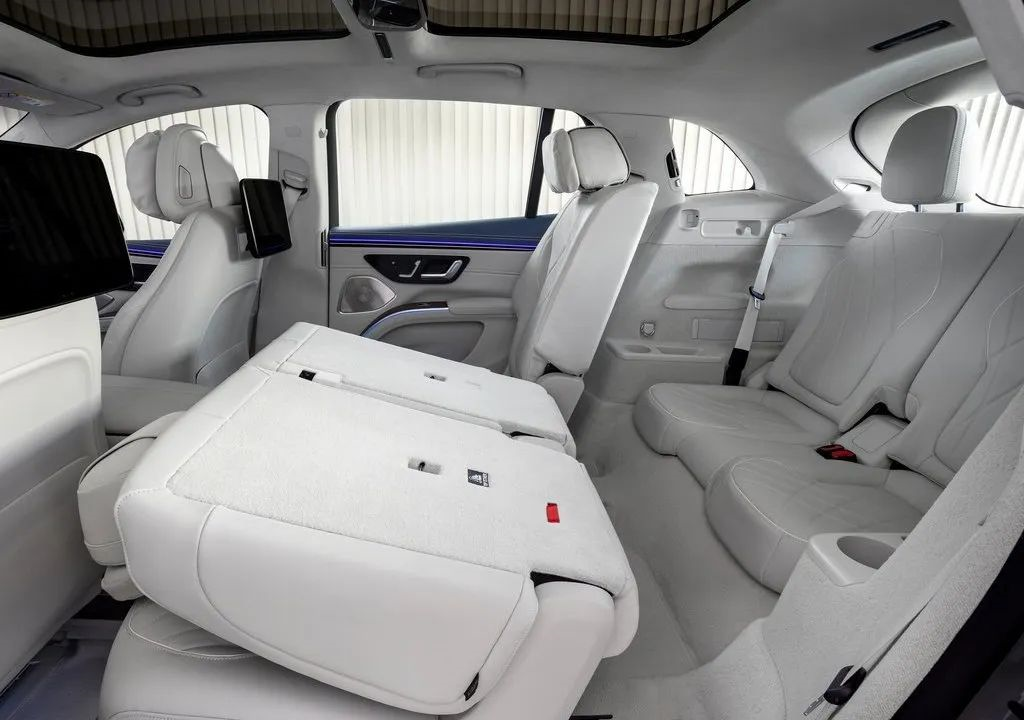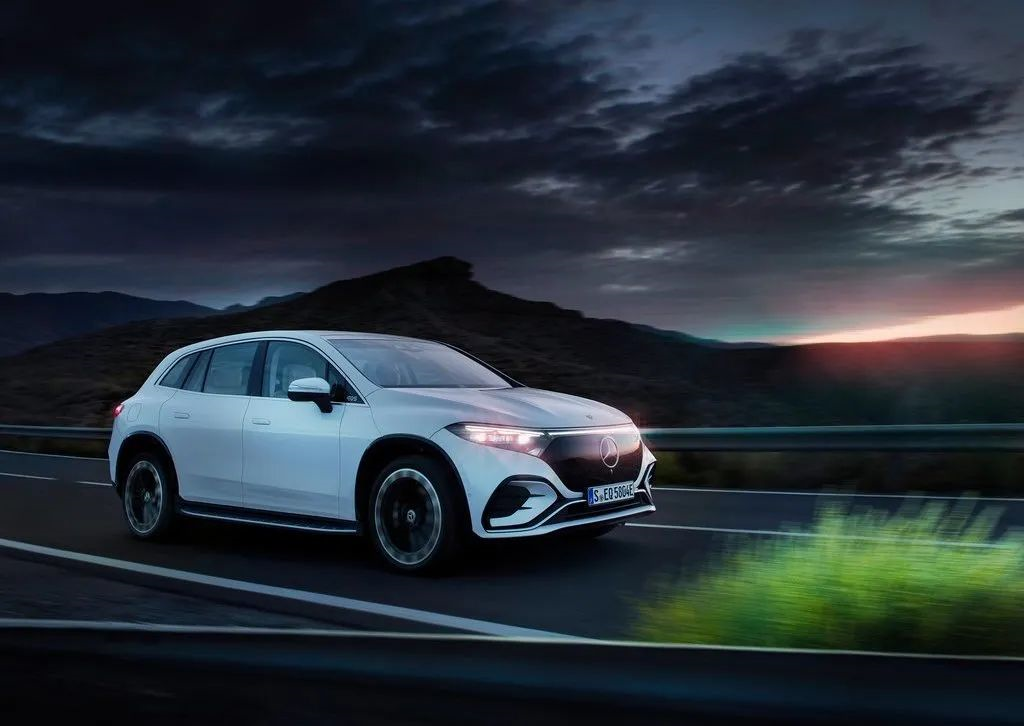Author: Erchai
Affected by the epidemic, the Beijing Auto Show which was supposed to open this month was postponed, and the “hard goods” prepared by the BBA three brands for the Beijing Auto Show can only be displayed online.
As the big brother, Mercedes-Benz officially launched the flagship EQS SUV model of the EQ family two days ago. However, after testing the EQS sedan and watching the debut of this car, my heart only has one sentence: This is the flagship car of Mercedes-Benz in the 21st century electrification background?
Back then, Mercedes-Benz’s design led the development of the automotive industry. The interior of a tenth-generation Mercedes-Benz S W222 fed many domestic brand models and designers. Today, the interior of some popular domestic models such as the Tank 300 and the Shadow Leopard can still find the shadow of Mercedes-Benz. But in the era of electrification, I don’t know if it’s because we have seen too many avant-garde and radical designs of domestic brand models, or because the design itself is not outstanding. In short, the overall appearance design of this Mercedes-Benz EQS SUV gives people a feeling of mediocrity, just like a bleak night after passion.

Of course, you can’t say that the design of the Mercedes-Benz EQS SUV is ugly. A large-area closed grille is adorned with a three-star emblem, and a through-style daytime running light strip extends from the headlight group. The large Mercedes-Benz logo is embedded in the grille and there are similarly sized air intakes on both sides of the bottom of the front end. There is no problem with these elements individually, but on this car, my intuitive feeling is that it is just okay.
However, the front face design language of the EQ family looks much better on SUVs.

On the side of the body, this EQS SUV doesn’t look long or burly. On the contrary, it’s quite round overall. Its body size has reached 5.12m in length and 3.21m in wheelbase. However, like the EQS, it doesn’t look large. My colleague and I even feel that the size of this car looks like a GLC. Words used to describe Mercedes-Benz flagship models in the past, such as atmospheric, dignified, elegant, and stable, are probably no longer applicable.

Like the EQS, the EQS SUV on the left fender of the body can see the water injection port of the wiper. The hidden door handles and pedals are not absent, and the style of the wheels is quite unique. It is said to also serve to reduce wind resistance and ensure the cruising range of this car.
On the rear end, the design is much simpler compared to the front end. A cohesive LED taillight group serves as the “protagonist,” and the style of the taillight group is not complicated either. The middle light bar has a slight curve, and the Mercedes-Benz logo is located below it. Interestingly, on the rear bumper, we can see two decorative shapes that resemble exhaust outlets. From the perspective of the designer’s “existence implies meaning,” this design seems to pay tribute to gasoline-powered cars, but whether it is necessary is debatable.

The overall design of the EQS SUV is similar to the EQS sedan. You may feel that this is an “uplifted” and more rounded EQS sedan. Under the drastic design changes brought about by electrification, the design of this car can only be considered passing grade in my opinion, and it still has a way to go to reach the high-level status of “automobile inventor.”

However, the interior design of the EQS SUV is equally stunning, and its “stunning” factor mainly comes from the 1.41-meter-long “giant screen” inside the car. You should know that the width of the car is only 1.95 meters. Unlike Tesla or BYD’s large screens, the “giant screen” in this Mercedes-Benz car almost runs through the entire center console, with a huge size, including a 17.7-inch OLED central display, a 12.3-inch dashboard, and a 12.3-inch co-driver screen. When you sit inside the car, you feel like you are in a surround theater.

The sense of technology and atmosphere is indeed fully realized, but from the EQS sedan experience, such a large screen can also bring a lot of pressure. Whether you like it or not really depends on personal preference, and as a leading automobile manufacturer, Mercedes-Benz is also pursuing an overall trend of “large screenization.”
 From the practical perspective, the resolution, clarity, and UI design of the large screen on EQS are all good. The EQS SUV uses the same system, with an 8-core CPU, 24GB of memory, and an NVIDIA Xavier AI chip, so its performance will be similar. However, compared to new competitors like Li ONE and NIO, the entertainment features of the EQS infotainment system are still lacking. Even though the screen is large, it feels like a waste without Carplay. When I tried EQS and connected to Carplay, the system was a bit laggy, and I’m not sure how EQS SUV will perform.
From the practical perspective, the resolution, clarity, and UI design of the large screen on EQS are all good. The EQS SUV uses the same system, with an 8-core CPU, 24GB of memory, and an NVIDIA Xavier AI chip, so its performance will be similar. However, compared to new competitors like Li ONE and NIO, the entertainment features of the EQS infotainment system are still lacking. Even though the screen is large, it feels like a waste without Carplay. When I tried EQS and connected to Carplay, the system was a bit laggy, and I’m not sure how EQS SUV will perform.
As mentioned by the official, the new car’s interior materials use high-end leather and wood to highlight the luxury feel. In terms of appearance, the interior indeed looks luxurious, especially with the Mercedes-Benz ambient light, which enhances the luxuriousness.
But from the EQS test drive experience, the touch of the so-called high-end leather is indeed average, and the thickness of the material does not seem to be positively correlated with its million-dollar price.
I have also reflected on this issue. Among the current domestically produced cars that cost around 200,000 yuan, the interiors are “soft to the end,” with many cars having excellent workmanship and materials that perform quite well (of course, the quality of the materials used may be different from Mercedes-Benz, but the tactile experience given to users is the same). This may spoil people. After experiencing EQS, the leather quality on the rear door panels is surprisingly similar to that of a 100,000 yuan domestically produced car, which makes me exclaim, “Isn’t this the same quality as a domestically produced car that costs ten thousand yuan?” You may say, “Mercedes-Benz uses XXX environmentally friendly materials mixed with other materials,” but sometimes one can only see the results.
Now let’s talk about the most likely major BUG to appear on the EQS SUV, the “seats,” which I have not experienced yet. This car comes standard with a five-seat model, and the third-row seats can be added at an additional cost, making it a seven-seat model. From the picture, the seats on the EQS SUV are the same as those on EQS.After experiencing the EQS, the seats in the rear row are the most criticized part. The backrest is very straight, the material is too hard, and the ergonomics are terrible. Together with the average rear visibility and small headroom, you can hardly find a comfortable sitting position to enjoy the huge legroom of the EQS. You can only sit upright like me and be very dignified, in order to have a less uncomfortable experience. The legendary saying of “driving a BMW, sitting in a Mercedes” is totally gone in the EQS.

The EQS SUV may encounter the same problem, but fortunately, the headroom has been improved and the angle of the rear seat backrest can be adjusted up to 28 degrees. Hopefully, the second row won’t have bugs like the EQS. As for the third row, it is likely to be emergency use only.

In terms of power, the EQS SUV is the same as EQS, divided into two models: EQS SUV 450+ and EQS SUV 580 4MATIC. The former is rear-wheel drive, and the latter is a dual-motor all-wheel drive. The maximum horsepower of the 450+ model is 360Ps, and the torque is 568N·m, while the 580 4MATIC model has 543Ps and 858N·m.
Both models have a battery capacity of 107.8 kWh, and the WLTP range is 660 kilometers, which is average according to the data. Mercedes-Benz officially claimed that when the EQS SUV utilizes fast DC charging, it only needs 31 minutes to charge from 10% to 80% battery level. The charging efficiency is quite high, but whether this value can be achieved depends on the actual performance of the charging pile.

As the flagship model of Mercedes’s current electric products, the EQS SUV is equipped with a rear-wheel steering system. After selecting special kits, the maximum turning angle can reach 10°, reducing the turning radius from 11.9m to 11m. From the EQS experience, although the car is more than 5 meters long, it is quite flexible with a small turning radius. In terms of suspension, the new car adopts a four-link front suspension and an independent multi-link rear suspension design, equipped with AIRMATIC air suspension with continuously adjustable damping and five dynamic driving modes.
 In terms of driving experience, Mercedes-Benz is indeed a strong player. The EQS offers a very nice driving experience, with linear power output, small turning radius, and excellent chassis quality. The resilience is tenacious and bouncy like a piece of gum I chewed for a morning in primary school. Mercedes-Benz’s century-old chassis foundation has not regressed as much as its design level. The entire car’s NVH is excellent. Therefore, on the EQS SUV, its driving experience is bound to be no worse.
In terms of driving experience, Mercedes-Benz is indeed a strong player. The EQS offers a very nice driving experience, with linear power output, small turning radius, and excellent chassis quality. The resilience is tenacious and bouncy like a piece of gum I chewed for a morning in primary school. Mercedes-Benz’s century-old chassis foundation has not regressed as much as its design level. The entire car’s NVH is excellent. Therefore, on the EQS SUV, its driving experience is bound to be no worse.
As Mercedes-Benz’s flagship SUV model built on a pure electric platform, this EQS SUV has a lot in common with the EQS. In the era of electrification, Mercedes-Benz’s design is no longer outstanding. The overall design of the car is not enough to give people a sense of luxury except for a Mercedes-Benz logo, while there are some minor problems in ergonomics, vehicle-machine interconnection, and material workmanship between the EQS SUV and the EQS.
Fortunately, the century-old driving tuning expertise of Mercedes-Benz is still there to support these two cars, but the million-dollar price tag still puts a question mark on their fate. Will the Chinese nouveau riche still go for this kind of Mercedes-Benz?

This article is a translation by ChatGPT of a Chinese report from 42HOW. If you have any questions about it, please email bd@42how.com.
